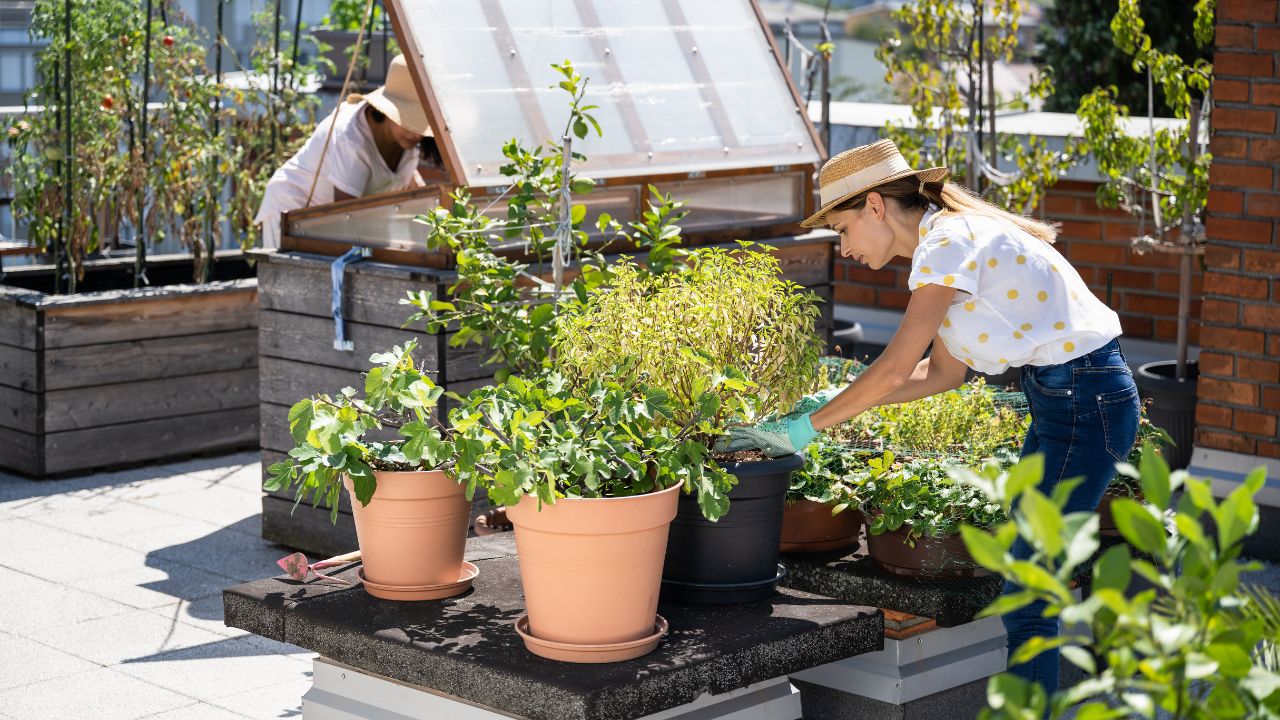Are you dreaming of creating a green oasis in your urban hipster home?
You can transform your small city space into a lush urban garden with just a little planning and creativity.
Urban gardening is an excellent way to grow fresh produce from your balcony or rooftop. It’s also an ideal opportunity to bring nature into your home while reducing food miles and stress levels.
To build the perfect urban garden, assess the available space in your apartment, balcony, or rooftop.
Consider taking advantage of vertical planting solutions like hanging planters, wall-mounted pots, or pallet walls to maximize gardening area and efficiently use small spaces.
It’s also essential to pay attention to the plants’ needs as you choose the species and structures of your garden. Remember that sunlight and microclimates within your space are crucial elements to help your plants thrive.
As an urban gardener, it’s also important to be mindful of proper maintenance.
Whether you’re growing indoor plants, outdoor greens, or a mix of both, ensuring that your plants receive the right amount of watering, feeding, and pruning is vital.
With a little effort, you can turn your hipster home into a beautiful urban garden that benefits both the environment and your well-being.
1. Understanding Urban Gardening
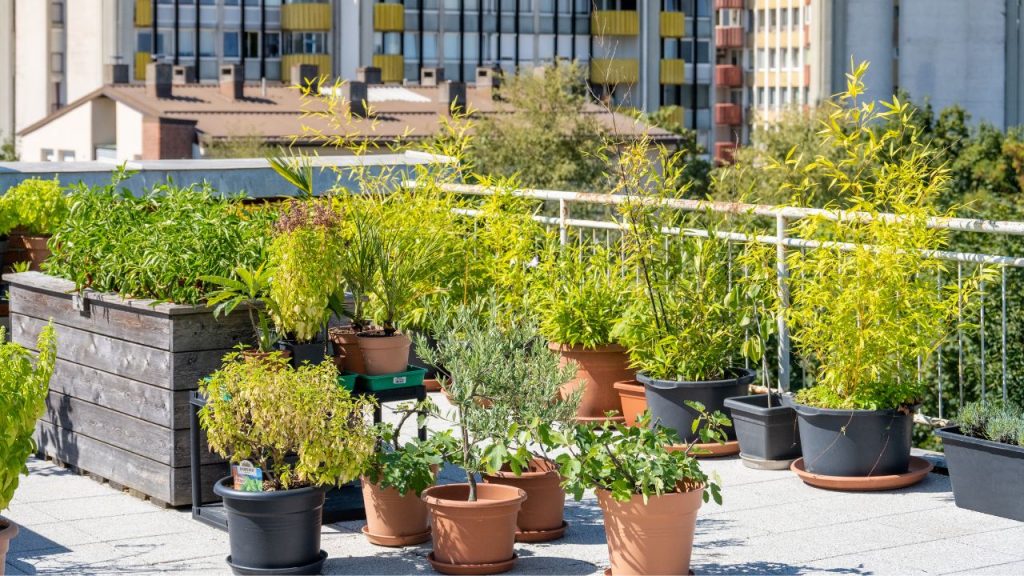
Urban gardening is a fantastic way to connect with nature and grow your food, even living in the heart of a bustling city.
By creating an urban garden in your hipster home, you can add a touch of greenery and self-sustainability to your living space.
Urban gardening encompasses a variety of techniques, from growing plants on windowsills and balconies to creating rooftop gardens and participating in community gardens.
The main goal of urban gardening is to produce quality food and provide a green space within the concrete jungle while reducing “food miles” (how far your food has to travel from farm to home), cutting food costs, and even reducing stress levels.
To start your city garden, first, assess your available space. Do you have a balcony, rooftop, or patio that can be transformed into a garden oasis?
Note the amount of sunlight your space receives, which will be crucial to choosing the right plants to grow. If outdoor space is limited, don’t worry!
You can still create an indoor garden or grow plants in containers placed on windowsills or hung from ceilings.
Next, choose the right plants for your urban garden. Pick plants well-suited to your climate and the amount of sunlight your space gets.
Some popular options for city gardens include herbs like basil, mint, and rosemary, leafy greens like lettuce and kale, and even small fruits and vegetables like tomatoes, peppers, and strawberries.
Once you’ve selected your plants, ensure they have the proper care and maintenance they need to thrive. This may include regular watering, adding fertilizer and nutrients to the soil, and addressing any pests that may come along.
Be prepared to adjust your care routine depending on the needs of your plants and the specific conditions of your urban garden.
Lastly, remember to enjoy your new urban gardening experience! Use the fruits of your labor in your cooking and share them with friends and family.
Engaging in urban agriculture provides fresh, delicious produce and a therapeutic and fulfilling way to connect with nature, despite your city surroundings.
2. Selecting the Perfect Space
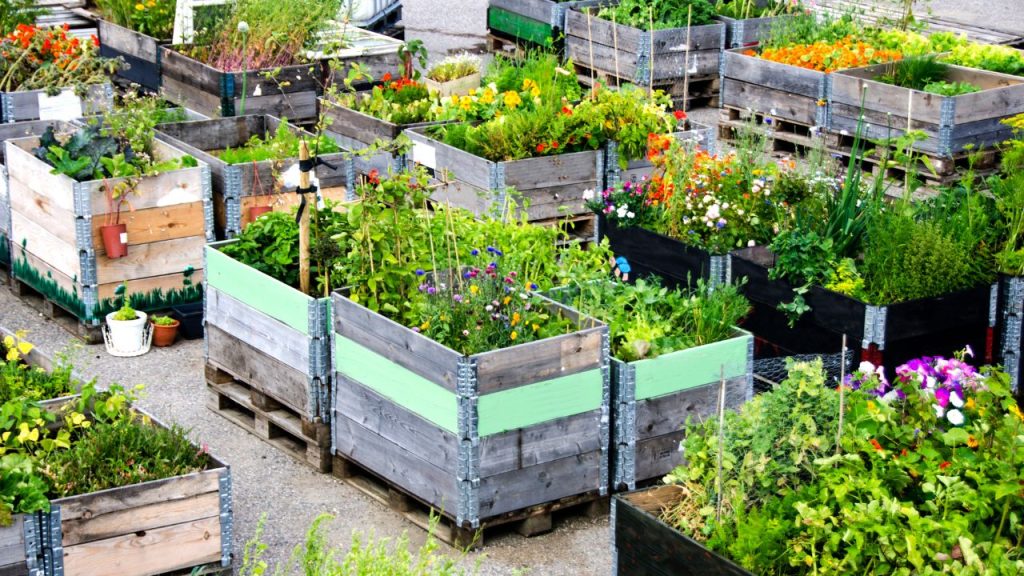
Creating an urban garden in your hipster home starts with selecting the perfect space.
Consider the following areas in your home as potential sites for growing plants, fruits, and vegetables:
Balcony
Transforming your balcony into a green space is an excellent option for small apartments.
Use hanging or vertical planters, container pots, and pallet walls to maximize your vertical space. Easy access to sunshine and protection from the wind are added perks of balcony gardening.
Patio
If you have a patio, it’s a great spot for nurturing an urban garden. Make the most of this space by utilizing stackable or raised planters and choosing plants that thrive in containers.
Remember to consider the sunlight and shade levels while selecting plants.
Rooftop
Rooftop gardens provide ample room for creativity. You can grow a mixture of flowers, vegetables, and even herbs.
Ensure your rooftop has proper drainage, and consider installing a mini greenhouse to extend your growing season.
Deck
Decks offer a solid foundation for an urban garden. Use containers, planter boxes, and trellises to grow various plants.
Check the weight capacity of your deck before adding larger containers and soil.
Ground
If you’re fortunate enough to have a small yard or green space, ground gardening offers the opportunity to cultivate directly in the soil.
Plan your garden layout carefully to maximize space and make it easier to maintain.
Vertical Garden
Vertical gardens are an excellent solution for limited spaces. Use wall pockets, trellises, or vertical planters to grow various plants, including bromeliads, ferns, hostas, and succulents.
Vacant Lot Gardening
With permission from property owners, you can turn a vacant lot into a thriving urban garden. Use raised beds and containers to grow a mix of plants while improving the space’s overall aesthetic.
Remember to evaluate each location based on sunlight levels, access to water, and the level of protection from harsh weather conditions.
Additionally, consider the type of plants you’d like to grow in your urban garden, considering their specific requirements.
Considering these factors, you can create a bountiful and visually pleasing urban garden in your hipster home.
3. Planning the Garden
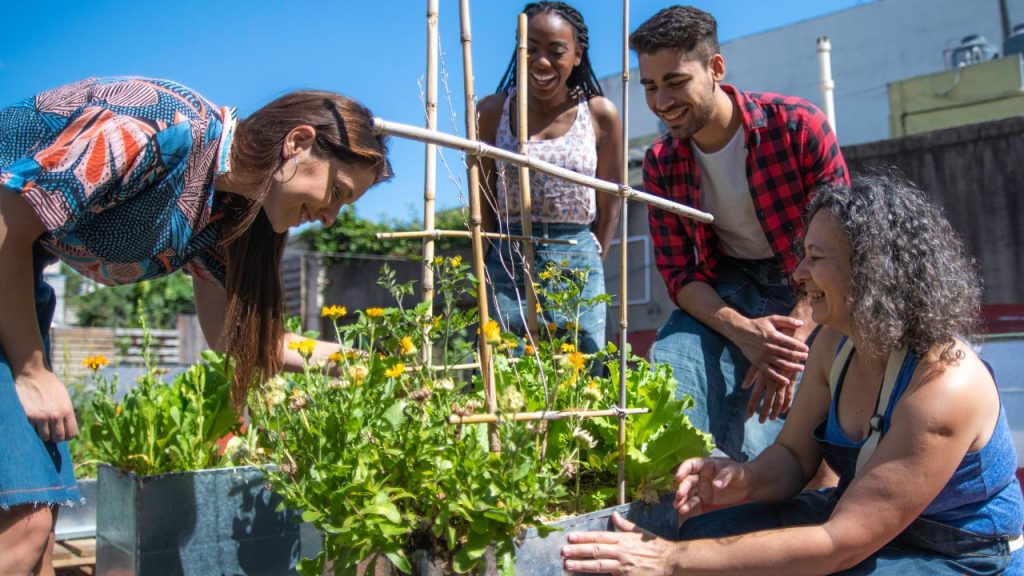
Starting an urban garden in your hipster home is an exciting project!
But before you dive in, some research and planning will make your gardening journey smoother and more successful.
First things first: assess the available space and consider the type of garden that would work best for you. Think about any balconies, sunny windows, patios, or small grass plots you can access.
Space-saving techniques, such as raised beds and vertical gardens, can help maximize your gardening area while adding a hip, urban aesthetic to your home.
Research the plants that will thrive in your garden’s conditions.
Depending on your local climate, available sunlight, and space, you can choose the right combination of vegetables, fruits, and flowers to create a vibrant and thriving urban oasis.
When planning your garden, remember to think about container gardening.
Using pots, planters, and hanging baskets can save space and make it easier to move and rearrange your garden as needed.
A helpful tip is to use styrofoam packing peanuts instead of gravel to lighten the weight of your pots and planters.
Sketch your garden plan, considering each plant’s growth patterns and requirements.
This will help you visualize the layout and ensure you have enough space and resources for each plant.
You can always start small and expand as you gain more experience and confidence in your urban gardening skills.
Consider the possibility of extreme weather conditions and take necessary precautions.
For example, if you’re planting on a rooftop or in an exposed area, provide airflow and protection with lattices, pallet walls, or trellises.
This will help your plants stay healthy and more resistant to heat, wind, or other unfavorable conditions.
A well-planned urban garden can be an enjoyable, environmentally friendly, and fruitful experience.
You can create a beautiful urban garden that complements your hipster home with proper research, planning, and care. Good luck, and happy gardening!
4. Choosing the Right Plants
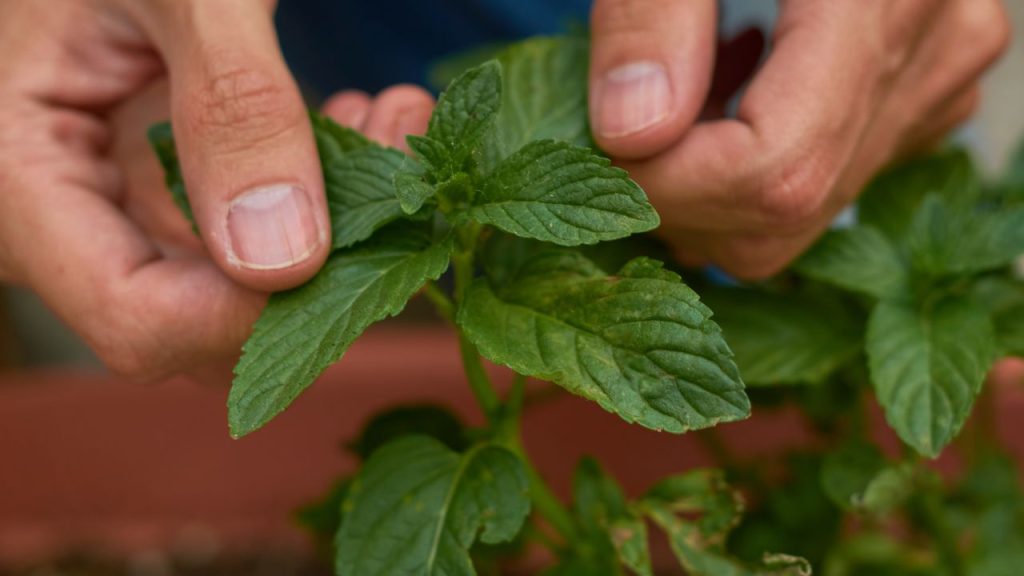
Choosing the right plants for your urban garden is essential to creating a thriving, hipster home. Consider your space, available sunlight, and personal preferences when deciding what to grow.
Start by thinking about what plants you enjoy, whether herbs, vegetables, flowers, fruits, or houseplants.
Experiment with various plants to see what works best in your space. For example, try planting herbs like basil, parsley, and cilantro, which are easy to grow and useful in the kitchen.
Vegetables like beans, peppers, tomatoes, lettuce, and leafy greens are popular. If you have more space, consider planting vegetables such as corn, peas, squash, or even strawberries.
Remember flowers to liven up your space. Petunias, zinnias, and daylilies are a few color options that can add a touch of beauty to your garden.
If you lack outdoor space, houseplants like snake plants, pothos, and spider plants can purify the air while adding some greenery indoors.
When selecting plants, consider the sunlight and shade your garden has. Some plants, like lettuce and peas, prefer cooler temperatures and can thrive in shadier parts of your garden.
On the other hand, crops like tomatoes and peppers need more sun and warmth to grow successfully.
For vertical gardening solutions, opt for climbing plants such as beans, peas, or even climbing varieties of tomatoes.
These plants make the most out of limited space by growing upward, allowing you to maximize your urban garden’s potential.
Remember to choose plants that suit your specific conditions and preferences. You can create a lush, thriving urban garden in your hipster home by selecting the right plants and making the most of your available space.
5. Preparing Your Space
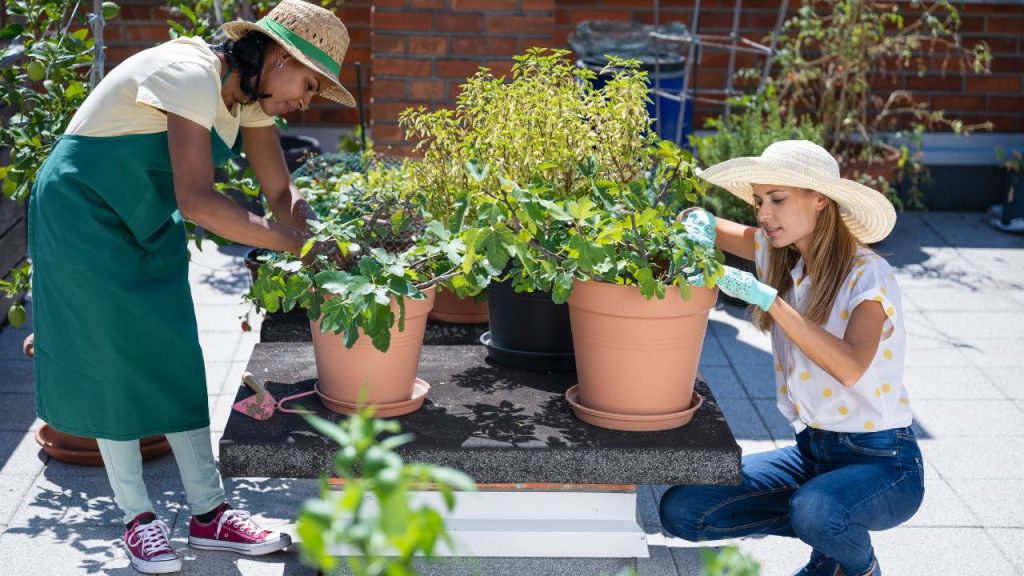
Before starting your urban garden, you must choose the right location and prepare the space. Your hipster home can have a garden on a balcony, rooftop, or patio.
Even if all you have is a small outdoor area with cement or brick flooring, there’s still potential to create a beautiful urban garden.
First, consider the containers you’ll be using for your garden. Container gardening allows you to grow plants in pots, which makes it perfect for urban spaces with limited soil.
Select containers of different sizes to accommodate various types of plants. Make sure there are drainage holes at the bottom to prevent waterlogging.
Regarding rooftop gardening, the main challenge is dealing with wind. Since rooftops can be exposed to strong gusts, you’ll need to provide a wind barrier if necessary.
Portable screens or strategically placed tall plants can help protect your garden from battering winds.
If you have a patio, assess the sunlight your plants will receive. Remember that most vegetables and flowers need at least six hours of direct sunlight daily.
Consider shade-tolerant plants or grow lights if your patio garden lacks sufficient sunshine.
Hydroponics is an innovative method of growing plants without soil using nutrient-rich water instead. This system is ideal for urban gardeners needing more soil access or space.
Aquaponics is another soil-less option, combining hydroponics with fish farming. As the fish produce waste, it’s converted into plant nutrients.
Here are some tips for setting up your urban garden space:
- Choose a location that receives ample sunlight
- Select the appropriate containers with proper drainage
- Consider wind protection for rooftop gardens
- Assess sunlight availability for patio gardens and consider shade-tolerant plants or grow lights
- Explore soil-less options like hydroponics and aquaponics
With a little planning and creativity, you can create a thriving urban garden in your hipster home. Happy gardening!
6. Planting Process
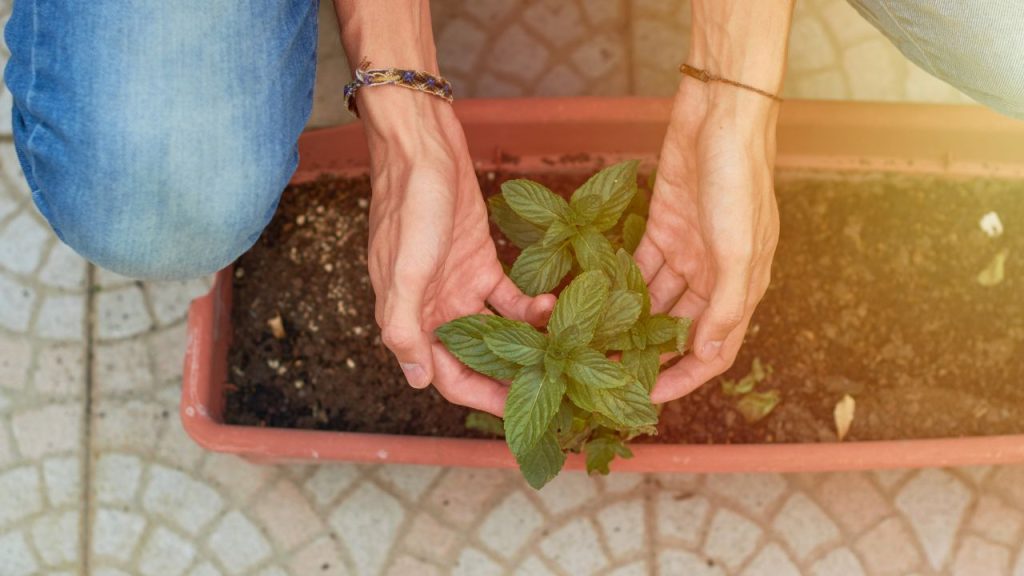
Creating an urban garden in your hipster home is a fun and rewarding project. Let’s dive into the planting process to help you get started.
Step 1: Choose your soil
Start by picking the right potting soil for your urban garden. A mix of peat moss, organic fertilizer, and well-draining soil will provide a solid foundation for your plants to thrive.
Step 2: Choose your seeds or plants
Select seeds or plants that will grow well in your chosen space and climate. Consider factors like sunlight, temperature, and water access when making your decision.
Step 3: Prepare your planting area
Ensure proper drainage in your chosen containers or garden beds by adding a layer of small rocks or pebbles at the bottom.
Fill the container with your potting soil mix, leaving about 1-2 inches of space at the top.
Step 4: Plant your seeds or plants
Using a trowel, hoe, or shovel, create small holes in the soil to place your seeds or plants. Follow the recommended spacing and depth for each plant variety.
Gently cover the seeds or plants with soil and pat it down to remove air pockets.
Step 5: Water and care for your garden
Water your urban garden immediately after planting, ensuring that the soil is consistently moist but not overly saturated.
Monitor your plants and provide the necessary care, such as pruning, fertilizing, and pest management.
With these steps in mind, you’ll be well on your way to creating a beautiful and productive urban garden in your hipster home. Happy gardening!
7. Caring for Your Urban Garden
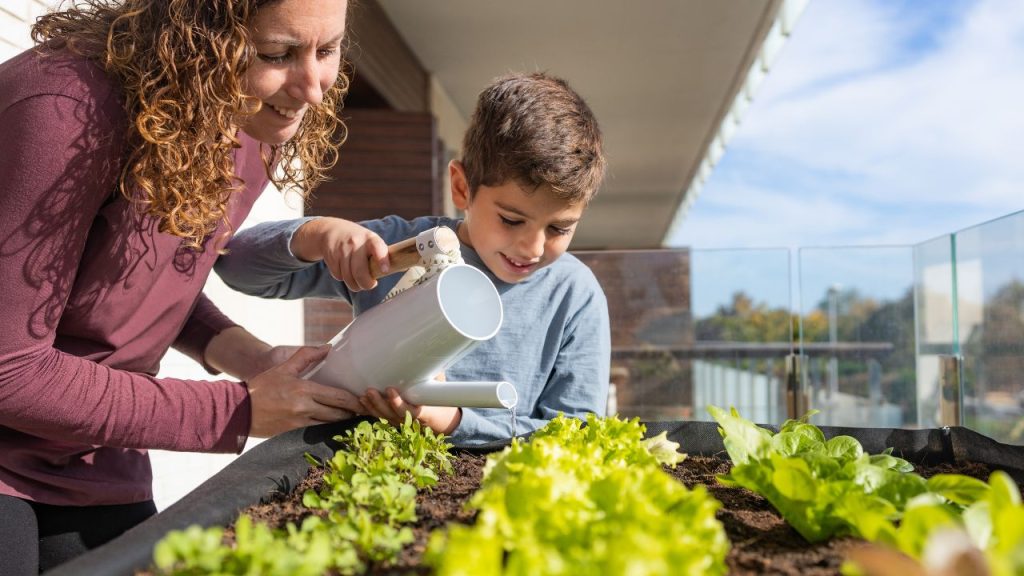
Creating and maintaining an urban garden in your hipster home can be a fun and rewarding experience.
Firstly, ensure your garden gets the right amount of sunlight. Most plants, especially vegetables, need at least six hours of direct sunlight daily.
Make sure you place your plants where they’ll receive optimal sunlight, and rotate them if necessary to ensure they catch sun rays evenly.
In an urban environment, it’s essential to maintain a healthy soil for your plants. Improve soil quality by adding lime or peat moss, depending on the soil’s pH level.
Mix in organic fertilizer, compost, and well-aged manure to provide essential nutrients for your plants.
Watering is a critical aspect of caring for your urban garden. Keep an eye on the soil’s moisture levels, and water your plants regularly. A good rule of thumb is to water deeply and less frequently.
This method encourages your plants to develop strong, deep roots. Automated sprinkler systems can save time and energy when watering your urban garden.
Dealing with pests is another challenge in an urban garden. Keep a close eye on your plants and make sure they stay healthy. Regularly check for signs of pests, such as chewed leaves or droppings.
If you spot any pests, a gentle, eco-friendly solution like a mixture of one teaspoon of neem oil, 1/2 teaspoon dish soap, and water can help. You can also encourage birds to visit your garden, as they can help control pests.
Remember, caring for your urban garden requires attention, patience, and dedication. With your friendly approach and these tips, you’ll be well on your way to creating a beautiful, bountiful garden in your hipster home.
8. Maximizing Space and Aesthetics
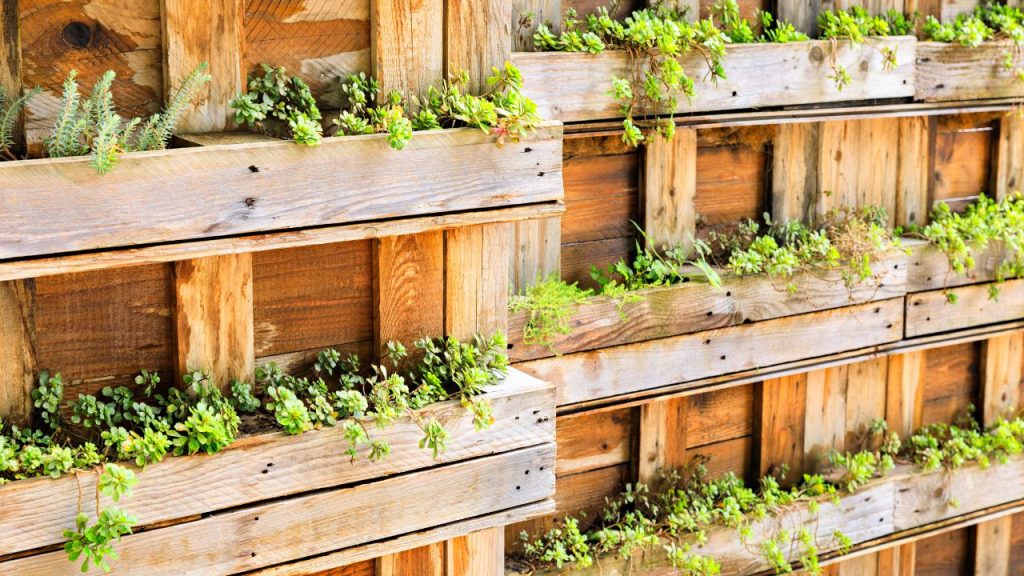
Creating an urban garden in your hipster home is about making the most of your available space while maintaining a visually appealing design.
To achieve this, incorporate some of the following elements to maximize space and aesthetics in your urban garden.
Vertical gardens are a great way to make use of limited ground space. You can create a stunning vertical garden using simple trellises or constructing custom wall planters.
Attach these to walls, fences, or balconies to maximize your vertical space.
Balcony gardens can transform your outdoor area into a green oasis. Use containers, hanging baskets, and railing planters to grow various plants, flowers, and vegetables.
Remember to include comfy cushions on your seating to create a cozy spot for relaxing and enjoying your garden.
Raised garden beds allow you to organize your plants while saving valuable floor space. They are particularly useful in small gardens and can double as a seating area when added with suitable cushions.
To match your hipster style, you can build raised garden beds from wood, stone, or even recycled materials like pallets.
Hanging plants are another excellent way to add greenery to your urban garden without sacrificing floor space. Suspend plants in decorative planters from overhead beams, pergolas, or even your balcony ceiling.
Hanging plants can create a lush, green canopy that adds depth and interest to your garden.
Incorporating decorative fencing helps define your garden space and provides additional surfaces for growing plants.
Install trellises or shelves onto fences, then cover them with climbing plants and vines to create a living, green wall.
By combining vertical gardens, trellises, balcony gardens, wall planters, hanging plants, raised garden beds, and fencing, you can create a functional and visually appealing urban garden.
Remember to personalize your space with decorative elements like cushions to express your hipster style. Enjoy your new urban garden sanctuary!
9. Harvesting and Enjoying Your Produce
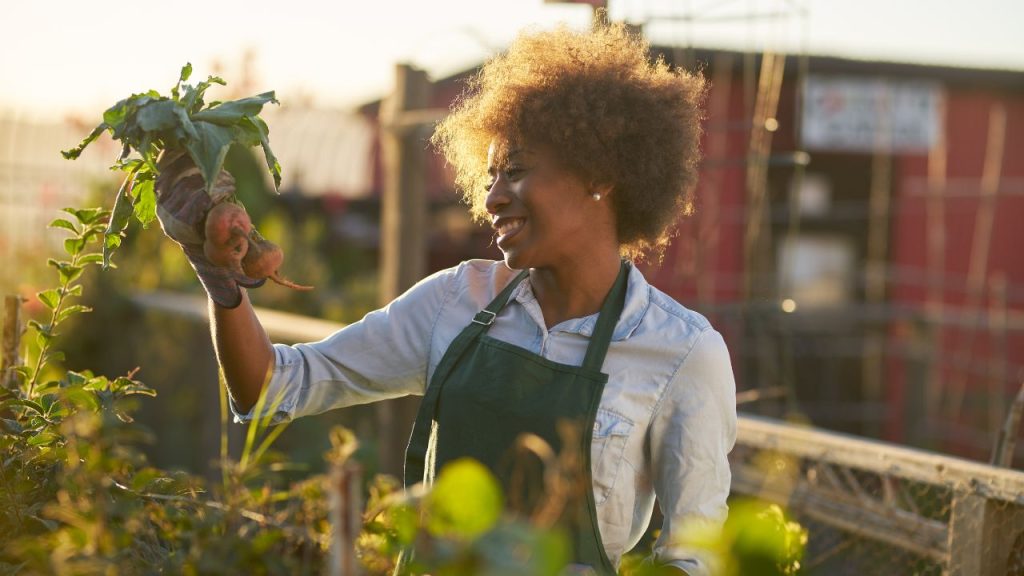
Now that you’ve established your hipster urban garden, it’s time to enjoy the fruits (and veggies) of your labor! Harvesting your produce at the right time ensures maximum flavor and nutrition.
Here’s a friendly guide on when and how to collect the yield from your indoor garden.
Harvesting your produce
- Sprouts: As one of the quickest-growing indoor crops, sprouts will be ready in just a few days. Harvest your sprouts when they have grown two sets of leaves. Gently remove them using clean, sharp scissors. Rinse the sprouts thoroughly and enjoy them in your favorite dishes.
- Leafy greens: Lettuce, spinach, and other leafy greens usually reach their prime about 4 to 6 weeks after planting. You can harvest these by picking the outer leaves, allowing the plant to continue growing. Harvest the greens in the morning for the best taste.
- Herbs: Most herbs, such as basil, thyme, and rosemary, can be harvested as soon as they are mature enough to use and have plenty of leaves. Snip the stems just above the leaf junction, taking care not to remove too much of the plant at once.
Enjoying your fresh produce
Now that you have harvested your fresh indoor garden bounty, put it to good use in your hipster home with these delicious ideas:
- Toss together a colorful salad with your leafy greens and sprouts, adding avocado, nuts, and your choice of dressing.
- Whip up a fantastic urban garden pesto using fresh harvested basil, garlic, pine nuts, and olive oil.
- Experiment with smoothie recipes with your harvest, combining leafy greens, sprouts, and your favorite fruits for a nutrient-packed drink.
Remember to always wash your produce thoroughly before consuming it. Enjoy the satisfaction of eating fresh, home-grown food that you nurtured right in your urban dwelling.
Frequently Asked Questions
What are the best plants for a small urban garden?
When choosing plants for a small urban garden, consider selecting those that are suitable for your climate and can thrive in limited space. Some great options might be herbs like basil, mint, or cilantro, and vegetables such as lettuce, spinach, and cherry tomatoes. Don’t forget to add some flowering plants like marigolds or lavender for visual appeal.
How do I maximize space in my urban garden?
To make the most of your limited space, you can try vertical gardening. Utilize wall planters, hanging baskets, and tall shelves to optimize your vertical space. Planting crops with complementary growth habits, such as vining plants and compact greens, can help you save space and promote healthier growth.
What materials should I use for building my garden?
When building your urban garden, opt for lightweight and durable materials like wood, plastic, or metal. For containers, consider using recycled items like painted tin cans, wooden crates, or pallets. Make sure the materials are safe for growing food, and choose containers with proper drainage.
How can I incorporate eco-friendly practices into my urban garden?
Incorporate eco-friendly practices into your urban garden by collecting rainwater to water your plants, using organic and homemade pest control methods, and composting your food waste. You can also grow native species and pollinator-friendly plants to support the local ecosystem.
How to maintain and care for my urban garden?
Regularly check your plants for pests, and treat them as needed with organic solutions like neem oil and dish soap mixtures. Water your plants according to their specific needs and avoid overwatering to prevent root rot. Prune your plants regularly to promote bushy growth and increased fruit yield. Don’t forget to fertilize with organic material like compost or worm castings.
What are some creative design ideas for an urban garden?
To add a touch of creativity in your urban garden, consider combining colors, textures, and shapes with your plant selections. Mix edible and ornamental plants to create a visually pleasing yet functional space. Repurpose old items like chairs, bathtubs, or bicycles as planters, and use decorative elements such as colorful pots or sculptures. Proximity to your Hipster Home’s design theme can also help in creating a cohesive and stylish garden space.
